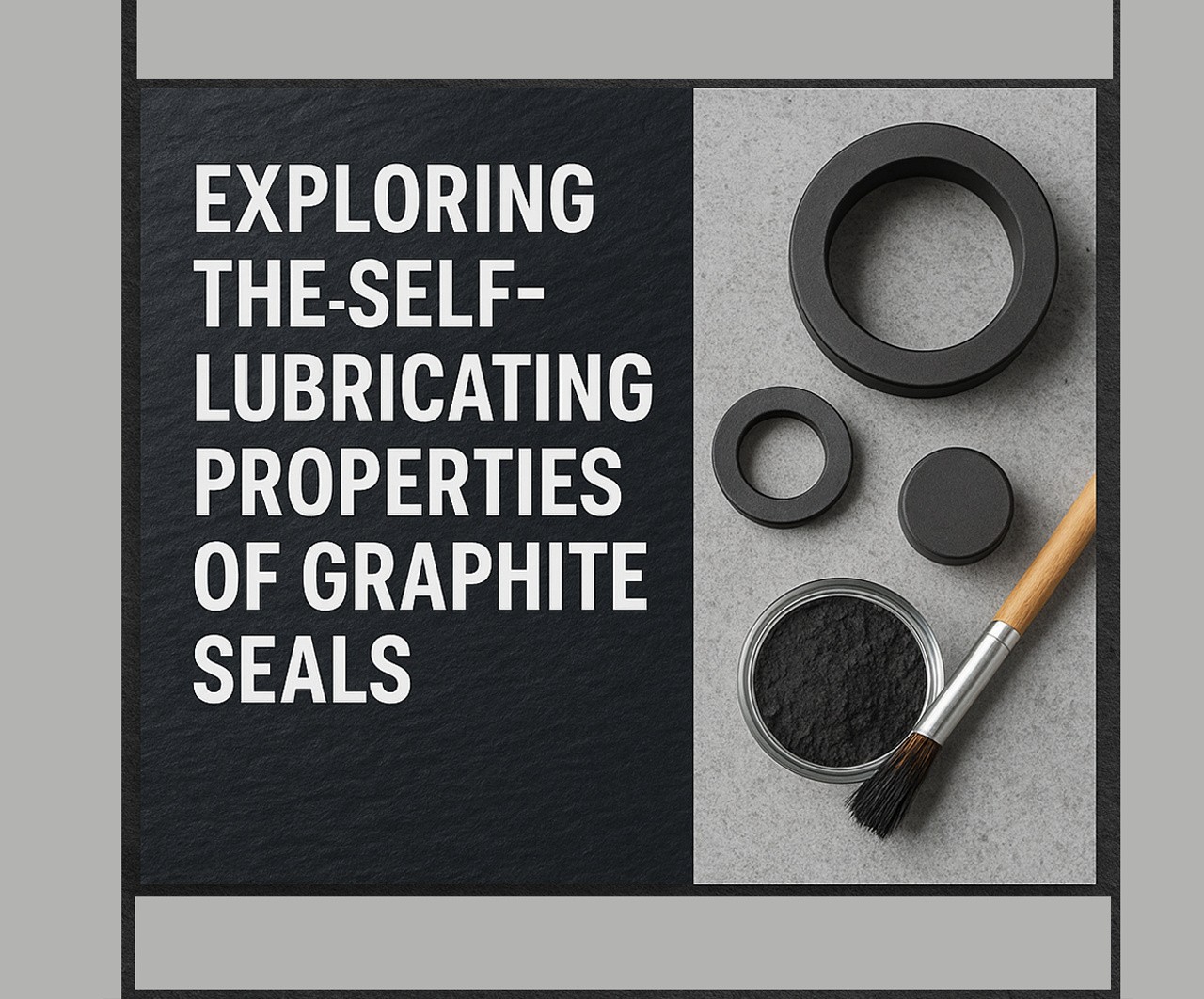In high-temperature, high-pressure, or chemically aggressive environments, traditional sealing materials often fall short. That’s where graphite seals, graphite gasket material, and gasket graphite sheet solutions come into play. These components excel not only for their heat and chemical resistance but also for their unique self-lubricating properties. This feature alone has transformed performance and reliability in industries ranging from power generation to petrochemicals and aerospace.
This article explores what makes graphite seals self-lubricating, how they outperform conventional gaskets, and why graphite gasket material and gasket graphite sheet products are becoming the go-to choice for engineers solving modern sealing challenges. Know more..
What Are Graphite Seals?
Graphite seals are mechanical seals or gaskets made from processed graphite, often in the form of flexible or reinforced sheets. Unlike rubber or metal gaskets, graphite does not melt—it sublimates at around 3,600°C—and maintains its structure under extreme stress.
What sets graphite seals apart from other materials is their ability to self-lubricate. This reduces friction between surfaces, lowers wear, and allows them to maintain integrity in moving or vibrating systems.
The Science Behind Self-Lubrication
Graphite’s atomic structure is made of flat layers of carbon atoms arranged in a hexagonal pattern. These layers can slide over each other easily, acting like microscopic ball bearings.
Key Self-Lubricating Benefits:
- Low friction coefficient (even at high temperatures)
- Reduced galling or seizing
- Improved wear resistance
- Enhanced sealing under dynamic load
This makes graphite gasket material particularly suitable in flange assemblies and pump housings where mechanical motion would degrade traditional seals.
Types of Graphite Gasket Material
There’s no one-size-fits-all when it comes to graphite gasket material. Engineers can select from several variations, each tailored for specific environments.
1. Flexible Graphite
- Soft and pliable
- Fills uneven surfaces well
- Commonly used in gasket graphite sheet form for cut shapes
2. Reinforced Graphite
- Combined with metal cores (like stainless steel)
- Offers strength and blowout resistance
- Ideal for pressurized systems
3. Graphite with Inhibitors
- Treated to resist oxidation
- Suitable for use in oxygen-rich or high-moisture environments
These variations allow graphite seals to be customized for pressure, chemical exposure, and mechanical requirements.
Gasket Graphite Sheet: A Customizable Solution
Gasket graphite sheet products are flat sheets of flexible graphite that can be die-cut, water-jet cut, or hand-shaped into custom seal designs. They’re widely used in applications where off-the-shelf gaskets won’t cut it.
Advantages of Gasket Graphite Sheets:
- Easy to shape and size
- Conforms to flange imperfections
- Available in various thicknesses
- Works with a wide range of bolt loads
For applications like steam turbines, boiler systems, and chemical reactors, the gasket graphite sheet approach provides tailored sealing solutions that other materials can’t match.
How Graphite Seals Perform in Real-World Applications
1. High-Temperature Sealing
Graphite seals can handle temperatures up to 5,400°F in non-oxidizing atmospheres. Even in the presence of steam or thermal cycling, graphite gasket material retains its sealing properties.
Use case: Power plants use graphite seals in flange joints for steam lines where rubber and PTFE fail due to heat degradation.
2. Chemical Compatibility
Graphite is inert to most acids, alkalis, solvents, and hydrocarbons, making graphite gasket material the preferred choice in the chemical processing industry.
Use case: Chemical plants employ gasket graphite sheet seals in pump housings and reactor flanges for aggressive media like sulfuric acid or nitric acid.
3. Vibration and Movement Tolerance
Thanks to self-lubrication, graphite seals can absorb micro-movements without cracking, shrinking, or seizing.
Use case: Aircraft engine gaskets made from graphite gasket material reduce maintenance cycles caused by vibration-induced gasket degradation.
Graphite vs. Traditional Gasket Materials
| Feature | Graphite Gasket Material | Rubber | PTFE | Metal |
| Temperature Resistance | Up to 5400°F | ~400°F | ~500°F | Varies |
| Chemical Resistance | Excellent | Moderate | Excellent | Poor |
| Self-Lubricating | ✅ | ❌ | ❌ | ❌ |
| Compressibility | High | Very High | Low | Low |
| Reusability | Often | Rarely | Sometimes | Rarely |
Graphite seals clearly outperform traditional materials in extreme conditions, making them ideal for mission-critical systems.
How Prototyping and Customization Are Driving Innovation
Thanks to advancements in gasket graphite sheet processing, custom seals can now be prototyped quickly for new machinery and field retrofits.
Modern Techniques:
- Laser cutting for intricate seal shapes
- Waterjet machining for large industrial sheets
- CAD/CAM integration for precision prototyping
This has enabled design engineers to test graphite gasket material in small batches, evaluate performance, and scale quickly—all without the need for costly molds or tooling.
Mistakes to Avoid with Graphite Seals
Despite their versatility, graphite seals need to be handled correctly to reach peak performance.
❌ Over-Torquing
While graphite gasket material is compressible, over-tightening bolts can cause extrusion or crushing. Always follow the torque specs.
❌ Ignoring Oxidation Risk
Uncoated graphite can oxidize above 900°F in open air. Choose inhibited graphite gasket material for these conditions.
❌ Reusing Deformed Sheets
Once a gasket graphite sheet has been compressed, reusing it compromises its sealing capability. Use fresh sheets for each assembly.
Future Trends: Where Are Graphite Seals Going Next?
Smart Gasket Integration
Embedded sensors within graphite seals are being tested to monitor temperature, pressure, and wear in real time.
Hybrid Gasket Materials
Engineers are combining graphite gasket material with elastomers or metals to balance flexibility with blowout resistance.
Eco-Friendly Processing
Sustainable sourcing and processing of gasket graphite sheet products are gaining attention as industries strive for greener manufacturing practices.
Final Thoughts
Graphite seals, graphite gasket material, and gasket graphite sheet products are redefining what’s possible in sealing technology. Their self-lubricating properties make them ideal for high-demand environments where traditional seals simply can’t perform.
Whether you’re working with steam, corrosive chemicals, or ultra-high temperatures, graphite gives you a sealing solution that lasts longer, performs better, and reduces maintenance. As industries continue to push the limits of what machines can do, graphite seals will remain a cornerstone of safe, reliable, and efficient performance.


